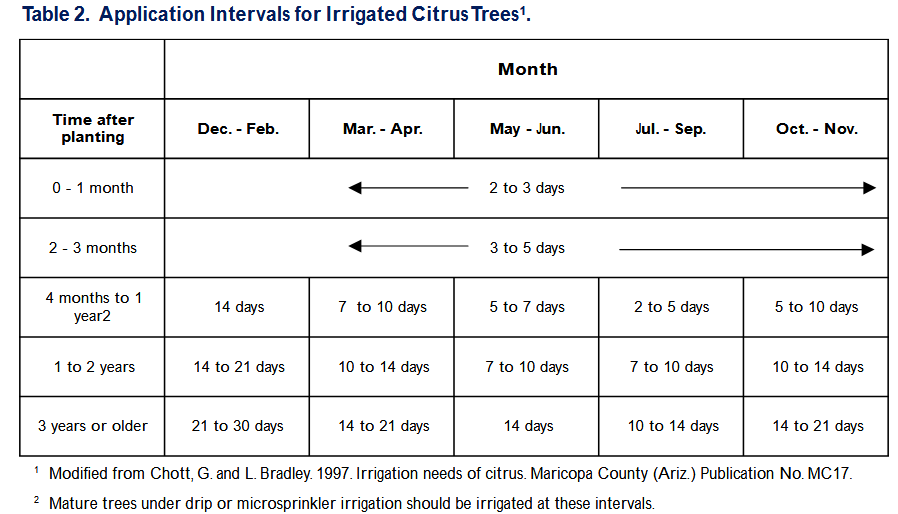Caring for Citrus Trees in Arizona
Arizona is known for its citrus trees, from Navel oranges and Meyer lemons to Mexican limes and grapefruit. These trees thrive in our low desert climate, but they need proper care to stay healthy and produce delicious fruit.
While many citrus trees grow well here, some—like lemon trees and combination fruit trees—require extra attention. The most common challenges homeowners face are watering and fertilization.
Citrus Tree Watering in Arizona
Proper irrigation is key to citrus tree health.
-
Water should soak 2–3 feet deep with each application. Use a soil probe to check.
-
Water should extend 1 foot beyond the canopy since that’s where feeder roots are.
Watering Frequency:
-
Young Citrus Trees (first 3–6 months): Every 2–5 days.
-
Mature Citrus Trees: Deep watering about once per week, depending on season and temperature.
Pro Tip: Always water deeply to flush salts from Arizona’s naturally salty soil.
Fertilizing Citrus Trees
Citrus trees need consistent feeding to stay productive. In Arizona, apply fertilizer three times a year:
-
February (Valentine’s Day)
-
May (Memorial Day)
-
September (Labor Day)
Fertilization Guidelines:
-
Use a high-nitrogen fertilizer designed for citrus.
-
Adjust amounts based on tree type, size, and maturity.
-
Reference the Arizona Cooperative Extension Citrus Fertilization Charts for exact rates.
Common Citrus Tree Problems & Solutions
Fruit Issues
-
Fruit Split: Caused by moisture stress during fruit development.
-
Thick Rinds: Normal for young trees; in older trees, it may mean too much nitrogen.
-
Early Fruit Drop: Often due to insufficient soil moisture or nutrients.
-
Dry Fruit: Sometimes linked to rootstock; corrected with improved water and fertilizer.
Leaf Issues
-
Leaf Curl (dull green): Water stress.
-
Leaf Tip Burn: Salt buildup in soil—deep watering helps flush salts.
-
Pale Green/Yellow Leaves: Usually nitrogen deficiency or overwatering.
Arizona Citrus Trees in Landscapes
At Arizona Living Landscape & Design, we integrate citrus trees into backyard designs—combining shade, beauty, and fresh fruit with paver patios, outdoor kitchens, and entertainment areas.
See more in our Arizona landscape gallery.
Want healthy citrus trees as part of your backyard?
Call Arizona Living Landscape & Design at 480-390-4477 or Request a Free Quote.
We’ll design and build a landscape that includes thriving citrus trees and other desert-friendly plants—perfect for Arizona living.
Below is a table watering interval guide for citrus trees .

https://extension.arizona.edu/sites/extension.arizona.edu/files/pubs/az1151.pdf
Arizona Citrus Tree Care FAQ
Fruit split is caused by irregular watering or drought stress while fruit is developing.
Yellow leaves usually mean a nitrogen deficiency or over-watering. Adjust fertilizer and water deeply but less often.
Fertilize citrus trees three times a year — in February, May, and September — using a high-nitrogen citrus fertilizer.
Young citrus trees need water every 2–5 days, while mature trees need a deep soak about once per week depending on season and heat.
Navel oranges, Meyer lemons, Mexican limes, and grapefruit grow best in Arizona’s desert climate.
Yes, putting mulch around the basin well is a great idea to keep the soil cool in the summer and warm in the winter to protect your trees.
Citrus trees that are left natural will protect the trunk from sunburn but it you trim up the branches away from the trunk it is a good idea to paint the trunk to protect it from the sun and insects.